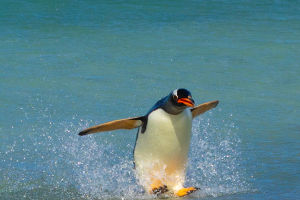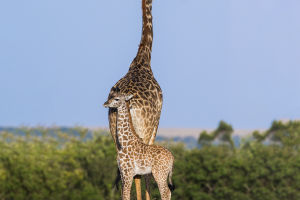In the vast expanse of nature, cheetahs stand out for their graceful demeanor and lightning-fast running speed.
Yet, beyond these mesmerizing traits lies a fascinating aspect of cheetah behavior: their remarkable genetic similarity, bordering on cloning.
Lykkers, Here, we'll delve into the underlying causes of this cloning phenomenon within cheetah populations and its profound implications for the species' survival.
To comprehend the intricacies of cheetah cloning, one must grasp their reproductive patterns. Cheetahs are solitary creatures, often traversing landscapes alone with minimal interaction, except during the mating season.
This solitary lifestyle has led to genetic isolation among cheetah groups, constraining genetic diversity. Consequently, the gene pool is narrow, resulting in minute genetic variations between cheetahs, rendering them virtually indistinguishable in appearance.
Furthermore, the ecological milieu inhabited by cheetahs serves to amplify this cloning phenomenon. Primarily inhabiting the grasslands of Africa and certain regions of Asia, these environments offer stability and abundant prey resources.
Such conditions discourage migration and intergroup communication among cheetah populations, thereby impeding genetic exchange and exacerbating the prevalence of cloning.
However, despite the near-identical genetic makeup of cheetahs, they are not carbon copies of one another. Subtle discrepancies, such as variations in spot shapes and distributions, slight deviations in body proportions, and other nuanced traits, persist.
These minor differences may stem from environmental influences, individual growth adjustments, and sporadic genetic mutations.
The cloning phenomenon profoundly impacts the cheetah population's ecology and genetic diversity. Owing to their heightened genetic resemblance, cheetah communities are more susceptible to environmental fluxes and disease outbreaks.
An affliction or environmental perturbation affecting one individual can swiftly disseminate throughout the population, imperiling the species' survival.
Furthermore, cloning imposes constraints on the evolutionary trajectory of cheetahs. Genetic diversity underpins natural selection, facilitating species adaptation to evolving environments.
Yet, the excessive genetic uniformity among cheetah populations impedes their adaptability to novel challenges, impeding evolutionary progress.
Despite the prevalence of cloning among cheetahs, it does not impede our research and conservation efforts for this species. Through vigilant monitoring and protective measures, we can bolster their resilience against myriad challenges and safeguard their habitats.
Concurrently, efforts to augment population genetic diversity are paramount, enhancing the species' resilience and evolutionary potential.
In summary, while the phenomenon of cloning among cheetahs captivates attention, it underscores the species' vulnerabilities in terms of genetic diversity and ecological resilience.
By fortifying conservation strategies, preserving natural habitats, and fostering genetic diversity, we can champion the conservation of these majestic and fleet-footed creatures, ensuring their continued vitality and splendor in the wild.


